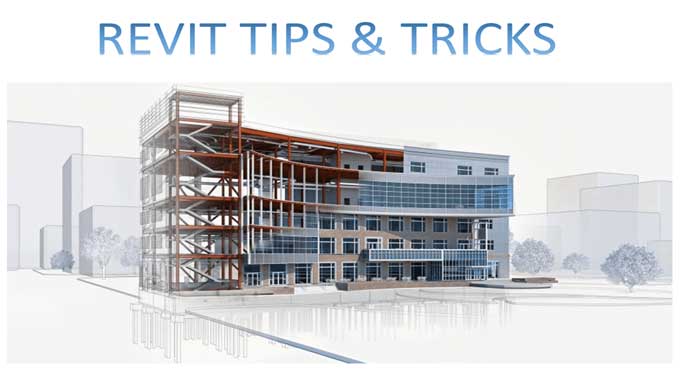A Guide to Success in 2023: Tricks and Tips for Mastering Revit
Tweet
Revit, developed by Autodesk, is powerful Building Information Modeling (BIM) software that has become a cornerstone in the architecture, engineering, and construction industries. Mastering Revit can significantly enhance your productivity and efficiency in designing and documenting building projects.
Understand the Revit Workflow
Before diving into the software, it is crucial to understand the fundamental workflow of Revit. First, users must become familiar with the user interface and understand the various tools available. It is also important to understand the hierarchical structure of Revit, as this will allow users to create and manage projects efficiently. In addition, users need to understand the concepts of work-sharing, families, and data sharing.
Start with conceptual design, create the building's shell and core, and then proceed with adding details, fixtures, and finishes. Familiarize yourself with the concept of parametric modeling, where changes made to one element automatically propagate throughout the project, ensuring consistency and accuracy.
Utilize Revit Templates
You can save time and streamline your workflow by leveraging Revit templates. Templates contain predefined settings, views, and families specific to your company's standards or project types. Templates can either be created yourself or modified according to your requirements. Using templates ensures consistency, eliminates repetitive setup tasks, and allows you to focus on the design process.
Master the Family Editor
The Family Editor in Revit is a powerful tool that allows you to create custom building components and elements. Invest time in understanding and mastering this feature. By creating your own families, you can customize and extend Revit's capabilities to match your project requirements. There are numerous online resources and tutorials available to help you learn and improve your skills in the Family Editor.
Work with View Filters and Graphic Overrides
Revit provides extensive options for controlling the appearance of your project views. Take advantage of view filters and graphic overrides to highlight specific elements, control visibility, and improve the overall presentation. By utilizing these tools effectively, you can enhance the clarity of your drawings and communicate design intent more effectively.
Embrace Collaboration with Work-sets and Linked Models
Revit facilitates collaboration among project team members through work-sets and linked models. Understand how work-sets enable multiple team members to work simultaneously on different parts of a project, improving productivity. Linked models allow you to reference external files, such as architectural, structural, or MEP models, and coordinate your design with other disciplines. Effective collaboration is the key to successful project delivery.
Automate with Dynamo
Dynamo, a visual programming extension for Revit, allows you to automate repetitive tasks and create custom workflows. Invest time in learning Dynamo, as it can significantly improve your efficiency and productivity. With Dynamo, you can automate data extraction, generate complex geometry, or create custom design tools. The online Dynamo community offers a wealth of resources and ready to use scripts that can be a starting point for your own automation needs.
Advanced Features
In addition to the basics of Revit, users should also become familiar with the more advanced features. This includes the use of parametric components, advanced modeling, and the use of plug-ins. Users should also understand the various ways to collaborate and work with teams, such as using cloud based collaboration tools.
Why is it so important of Mastering Revit?
Mastering Revit is an essential skill for any architect, designer, or engineer. With Revit, users are able to create high quality 3D models and drawings from scratch. Revit provides powerful tools and features for creating detailed and accurate designs quickly.
The next step to mastering Revit is to become familiar with the various tools and features. Users should understand the basics of drawing, editing, and annotation. They should also become familiar with the various commands and tools for creating, editing, and manipulating 3D objects.
Finally, users should practice their skills with Revit regularly. They should explore the different features and tools available and experiment with different projects. With practice, users will develop the necessary skills to become an expert in Revit.
To get online demonstration, watch the following video tutorial.
Video Source: Balkan Architect
Wrapping it Up
Mastering Revit is a valuable asset for professionals in the AEC industry. By following these essential tricks and tips, you can enhance your proficiency with Revit, improve your productivity, and ensure successful project outcomes.
Remember to understand the software's workflow, utilize templates, harness the power of the Family Editor, effectively control view appearance, embrace collaboration, and explore automation with Dynamo.
Continually seek opportunities to expand your knowledge through online resources, tutorials, and professional communities. With dedication and practice, you will become a Revit expert, empowering you to create exceptional architectural designs and efficiently manage complex projects.

Gallery
Feel free to contact us for BIM requirements. One of our representative will respond you within 24 Hours. Send us your projects requirement today and grow your project.
Explore More !







